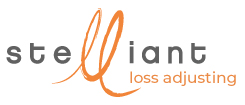Organic products not compliant with international standards
A biscuit and rusk manufacturer received a series of complaints from some organic stores in Europe. Analysis showed the presence of pesticides prohibited in organic farming, so its products did not comply with the term “organic”.
Background
The supplier of organic buckwheat seeds, used for producing flour and bought from foreign producers, was singled out as the likely suspect. The insurer of the incriminated supplier assigned Stelliant Loss Adjusting to determine the contractual chain, check the causal links, establish the amount of damages and apportionment, and identify any possible solutions. The major issue was to sift through the chain of contamination to establish those accountable in this complex case involving multiple parties across the world.
How Stelliant proceeded
During the joint appraisal meeting and the days after, the Stelliant loss adjuster carried out the usual investigations. The goal was to quantify the volume of the products affected by the contamination and thus determine the extent of material loss.
The loss adjuster had to consider the supplied raw materials not yet consumed, the finished or semi-finished products in stock and those delivered to major retailers and returned. He also checked the grounds and compulsory nature of the recall, by ensuring that the contaminant was prohibited under regulations. He then checked that the recall costs actually incurred in order to accurately calculate the amount of damages.
At the same time, the Stelliant loss adjuster performed tests, in the presence of the other parties, on the samples stored at each stage of distribution to corroborate the complaints. He then turned to the services of an accredited laboratory to pinpoint the source of the contamination.
The loss adjuster then performed a meticulous tracing on the upstream and downstream supply chain. It was a complicated task but essential to determine causality. Operators in the agri-food sector are subject to European regulations that oblige them, among other things, to provide continuous traceability. The loss adjuster had to verify whether the non-compliant organic products had actually been manufactured with the raw materials provided by the accused supplier. The investigation proved this hypothesis. Proceedings were then initiated against the Lithuanian producers for non-compliance.
Finally, the Stelliant loss adjuster being a quality specialist in the agri-food sector studied the manufacturer’s quality system called HACCP (Hazard Analysis Critical Control Point). This mandatory audit highlighted shortcomings in the manufacturer’s analysis and risk management procedures.
Given the results of the loss adjuster, the supplier and manufacturer agreed on an sharing of liability with an equivalent apportionment of damages to be paid.
The deft work of Stelliant’s loss adjusters and their multilingual skills (Polish, German, Spanish, etc.) enabled swift and effective risk management among all stakeholders across many borders.







